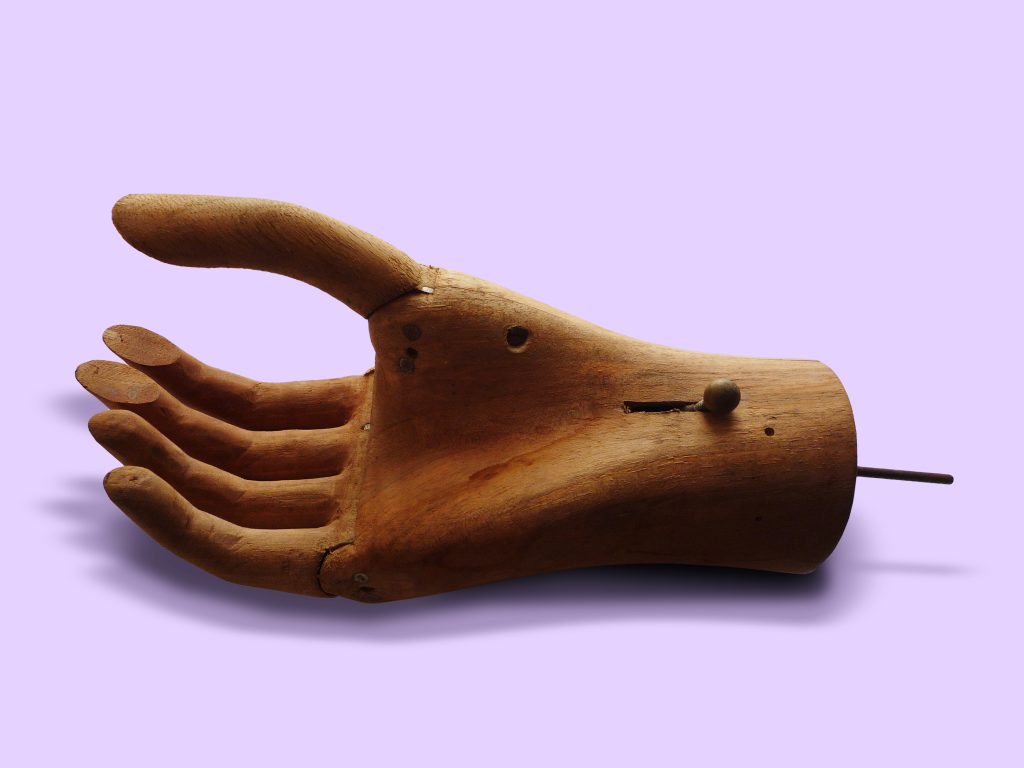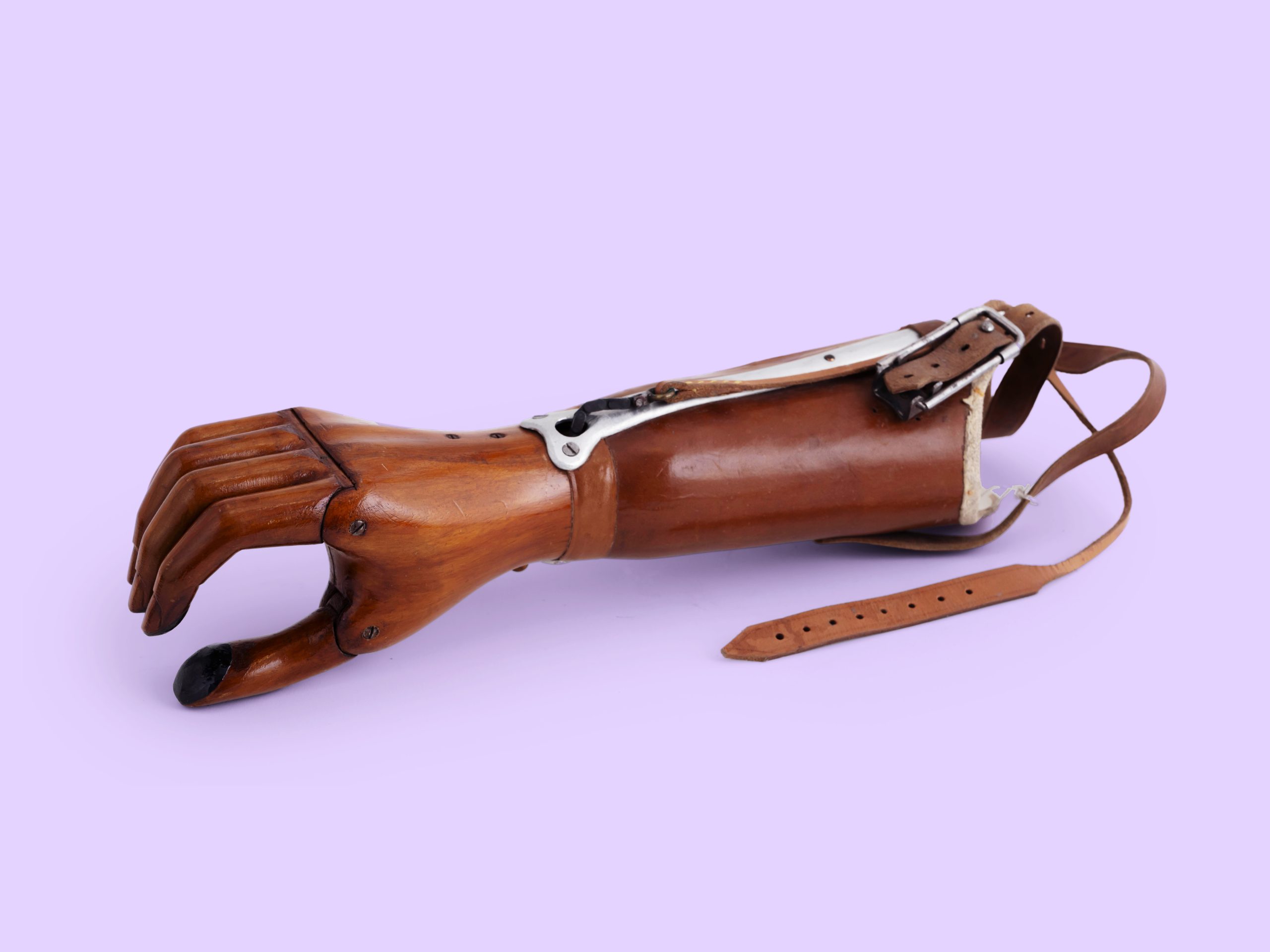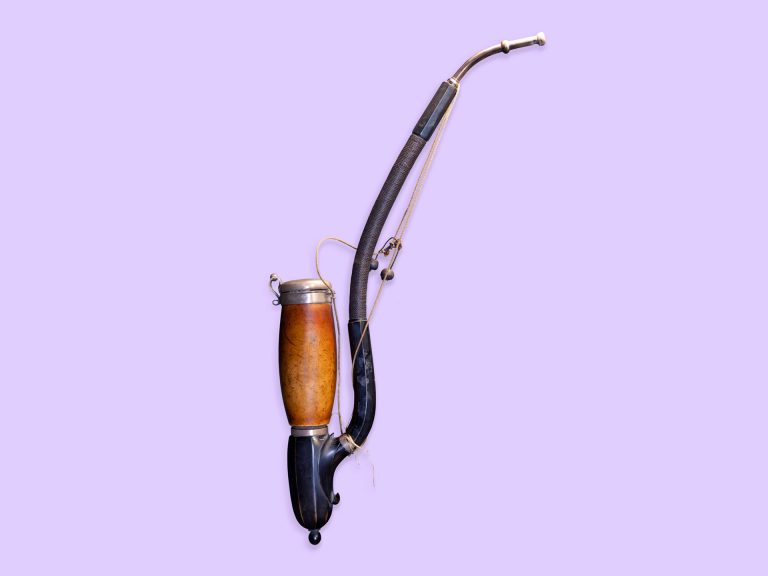The human cost of the First World War
The meat-grinder of the First World War killed two million of the 13 million German servicemen involved and wounded a further three million. The high number of young men who returned from the war injured and disabled – many of them amputees – generated a level of demand that revolutionized the science of prosthetics.
Although the considerable sums of money invested into the development of new forms of artificial limbs were a humanitarian imperative, the government was not just interested in improving the quality of life of war invalids; it hoped to reintegrate them into the labour market, and thereby reduce the financial burden caused by the increase in incapacity benefit.
A new age of prosthetics in the Weimar Republic
Up to this point, those in need of a prosthetic limb had a limited choice between very basic fittings: wooden stilts to replace a leg or a wooden or iron hook instead of a hand. More sophisticated applications were only available as tailor-made items available at high cost. The movable arm prosthesis developed by surgeon Ferdinand Sauerbruch in 1917 constituted a revolution in the field of prosthetics.
The Sauerbruch arm was not rigid, but could be moved by its wearer using muscle power. To this end, loops were formed from existing muscle cords in the forearm and connected to cables inside the prosthesis that controlled a gripping mechanism in the prosthetic hand.

Although this innovation was initially very expensive, the orthopaedic technician Otto Bock managed to standardize the individual components of the prototype, which permitted their mass production. With the first products on the market in 1919, he established the Ottobock Company as a global market leader in the field of prosthetics, a status which it maintains to this day.
The orthopaedic technician Jacob Hüfner, who worked for Sauerbruch, developed a mechanical two-pull hand in 1922, which he named the Hüfner hand. This could be actively opened or closed with a pull strap activated by muscle impulses and then locked in position with a mechanical lever. This meant that the user could grip objects by tensing their muscles and then relax whilst still holding the object.
Jacob Hüfner' prosthetic hand in the Deutschlandmuseum
Few original prostheses have survived in good condition from the early days of the Weimar Republic. The model on display in the Deutschlandmuseum is a prosthesis with a Hüfner hand from the early 1920s. Made of wood, metal and leather, the inside of the prosthetic arm is covered with fabric padding to make it more comfortable to wear. This model did not connect to the wearer’s muscle cords.
The moveable rubberized thumb and fingertips of the hand could be fixed in position by a locking lever. The fingers were moved via leather straps on the top of the prosthetic hand. This simpler form of prosthesis was more affordable than the complex Sauerbruch version and could be applied without additional surgery, thereby effecting a simple and affordable improvement to the wearer’s life.
The exhibit is on loan from the Natural History Museum, Vienna.
Property information
Designation
- Date after 1922
- Gallery The Weimar Republic
- Category Medicine
- Origin Germany
- Dimensions 9 x 8 x 31 cm (WxHxD)
- Material fabric, leather, metal, rubber, wood
Property information
Designation
- Datierung after 1922
- Epochenraum The Weimar Republic
- Kategorie Medicine
- Herkunft Germany
- Dimensionen 9 x 8 x 31 cm (WxHxD)
- Material fabric, leather, metal, rubber, wood

About the Deutschlandmuseum
An immersive and innovative experience museum about 2000 years of German history
Reading tips and links
Lifesaver? The German Steel Helmet in the First World War
German Tank Museum Munster
Lifesaver? The German Steel Helmet in the First World War
German Tank Museum Munster
Share article
Other objects in this collection
Discover history

Visit the unique Deutschlandmuseum and experience immersive history
2000 Jahre
12 Epochen
1 Stunde




